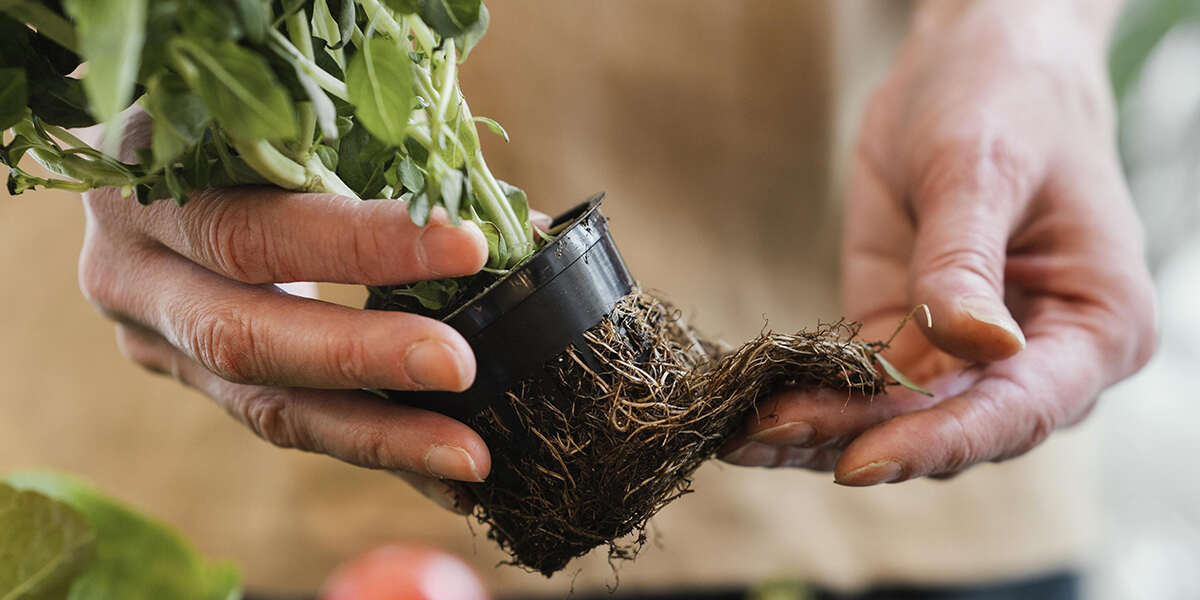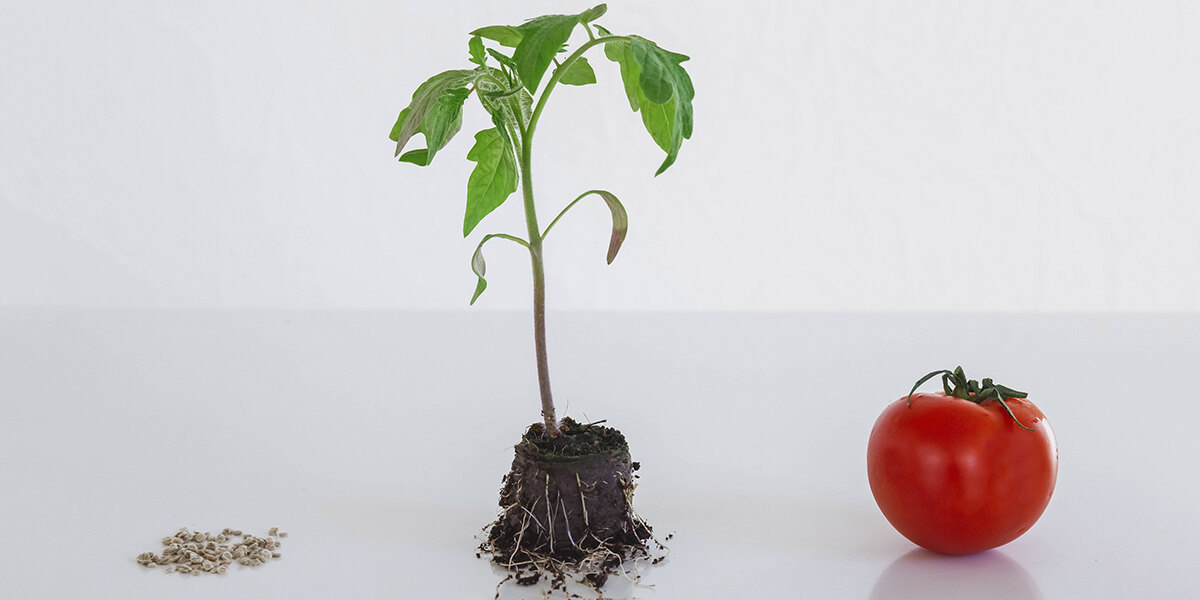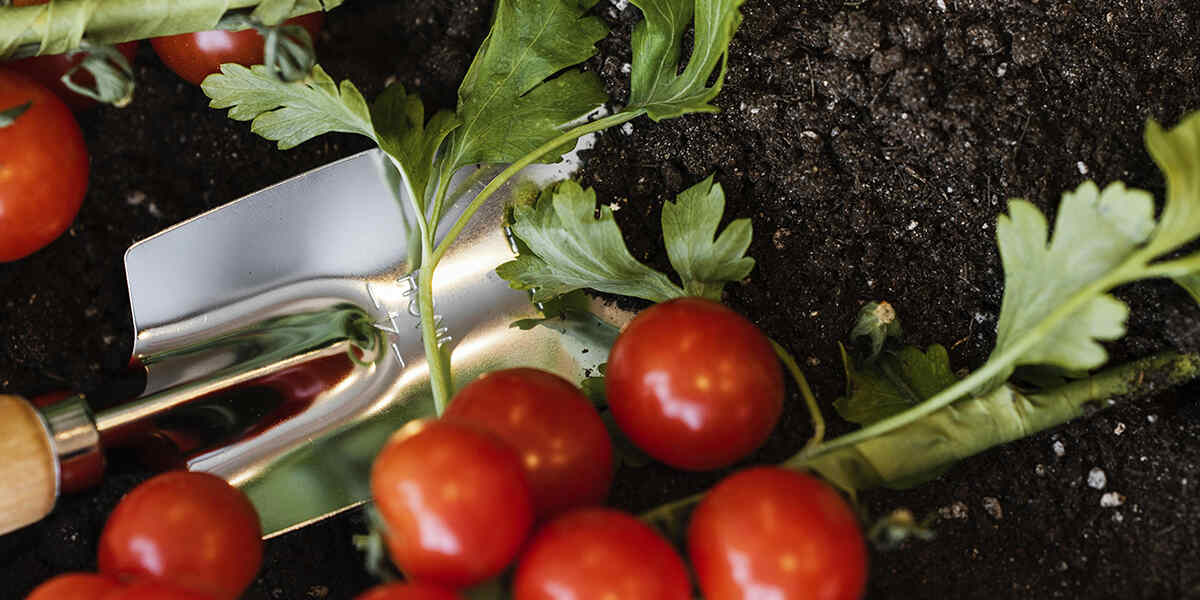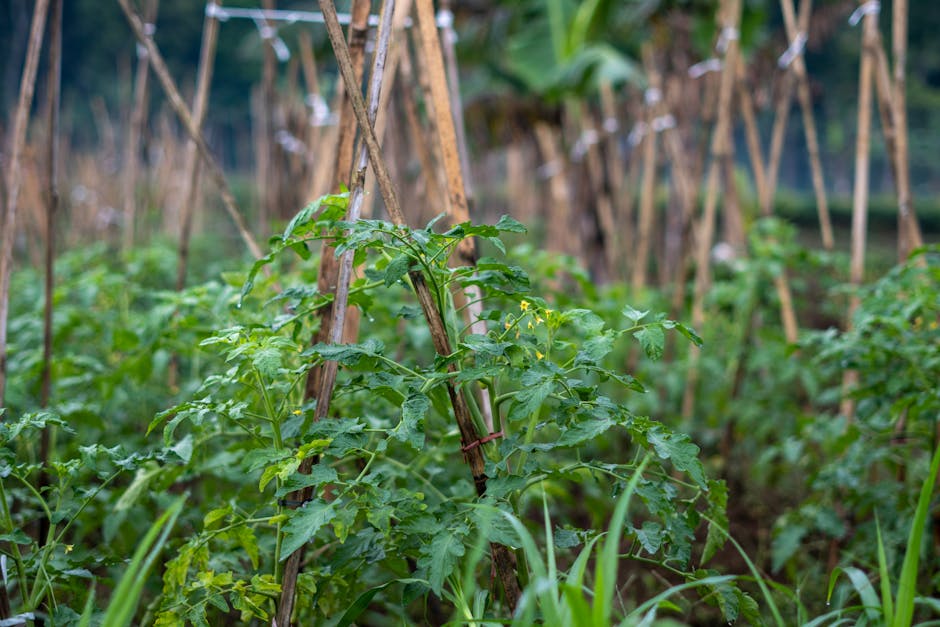With the proper TLC, tomato plants can provide a bountiful harvest of plump and delicious fruits. While many different factors impact the health and yield of tomatoes, their root system is one of the most important.
Have you ever wondered, “Just how deep do tomato roots grow?” Wonder no more because today, you’ll find the answer to that question.
At A Garden Patch, we’re just as passionate about gardening and growing as you are. That’s why we developed our GrowBox tomato planter so that even complete beginners can experience the joys of gardening and grow thick, lush plants that produce delicious tomatoes. Keep reading to learn about the root system of tomatoes and the best ways to get your own crop of these plump red fruits.

How Deep Can Tomato Plant Roots Actually Grow in the Soil?
It’s important to note that there’s no single answer to the question of just how deep tomato roots can go. If you’re reading this article looking for a quick response, you should leave at least one foot of room for your tomato plant to extend its roots.
Dicots, Cotyledons, and Taproots
Before we can explain exactly how far tomato plant roots will grow into the soil, you should know some background information. Gardeners know tomato plants as dicots, meaning they have two embryonic leaves (a.k.a. cotyledons). The cotyledons are the very first leaves you’ll see shooting up from the seed when it breaks through the soil for the first time.
Tomatoes have a taproot system. The benefit of a taproot is that it has a main root that extends deeply into the soil bed.
Simultaneously, a system of additional roots shoots off that main root to maximize water and nutrient absorption from the soil. Provided there are no obstacles, a taproot will penetrate straight down into the ground like an arrow.
So, what’s the answer? Here’s a hypothetical: let’s say a tomato plant is trying to grow in loose, sandy soil that lacks a consistent source of water and nutrients. In that case, the plant could extend its taproot system up to three feet (36 inches deep) in search of sustenance.
Most tomato plants will grow just fine with garden bed depths between one and three feet, though.
Do Tomato Roots Grow Vertically or Horizontally?
If you plan to grow your tomatoes from seed, expect their root system to grow both downward and outward. The primary taproot will extend vertically, and its secondary roots will grow laterally at shallower depths.
While what we just said is generally true, there is an exception. For example, if you grow a tomato plant from a cutting, it grows a fibrous root system that’s much shallower than a taproot.
Four Factors That Affect Root Depth for Tomato Plants
How deep do tomato roots grow? It depends.
Many different variables can impact the growth of tomato roots, including the specific type of plant, soil quality and structure, and how it begins life. Of course, the total depth of the container or ground where the tomatoes also grow directly affects how far their root systems can extend.
1. The Variety of Tomato Plants
Tomatoes have two primary classifications: determinate and indeterminate.
Determinate tomatoes yield smaller fruit but have denser, bushier leaves and greenery. Once this type of tomato grows to a certain height, it will flower and produce fruit simultaneously. Their shallow root system doesn’t extend very deep into the ground.
Indeterminate tomatoes (think heirloom varieties) produce larger fruit from their tall and viny plants. Left unchecked, they will continue growing until frost finally overtakes them. Heirlooms have much more robust roots that can penetrate further into the soil, which means they benefit from more nutrients and water to support healthy growth.
2. Planting Method
The technique you use to plant tomatoes significantly affects the health, depth, and direction of its root system. Plant them too close to the surface, and you’ll have shallow, unstable roots. Instead, plant the seeds or seedlings deeply to encourage vertical and lateral root growth, improve wind resistance, and make them more stable.
3. Soil Structure
Loam soil is ideal for growing tomatoes, as it allows adequate drainage and nutrient absorption. Conversely, clay-like soils that are very dense or compacted hinder the plant’s ability to grow strong roots with even distribution. It also prevents optimal nutrient uptake and adversely affects its growth. The looser the soil, the faster and deeper the tomato roots grew.
4. Soil Quality
How healthy is the dirt in which you plan to grow your tomatoes? Only garden beds with a consistent source of water and nutrients that are healthy enough to support plants will allow for crops of plump, delicious fruits.
Organic matter like compost is an excellent source of phosphorous for plants and other nutrients like potassium and nitrogen. Insufficient nutrient absorption can prevent the tomato plant from growing strong stalk and thick, healthy roots. Furthermore, the pH of the soil needs to range between 6.0 and 7.0 to create the best conditions for growth.

Grow the Tomatoes All Your Neighbors Will be Jealous of
Did you know how easy it is to plant and grow thick, juicy tomatoes? With help from the Garden Patch GrowBox, you get to enjoy gardening again to the fullest without all the hassle and guesswork. It couldn’t be simpler!
Just fill your GrowBox with your choice of potting soil, then lay the Nutrient Patch™ right over the surface. It’s numbered, so you never have to worry about improper spacing again. Finally, just add some water every few days, and watch as your plants start sprouting skyward.
The GrowBox utilizes special technology to ensure a constant source of air, water, and nutrients, including automatic watering and fertilization. It’s also big enough to accommodate the root system of tomatoes or any other veggie plant of your choice.
How deep do tomato roots grow? Under certain conditions, they can grow up to three feet deep, although one foot is also okay.
Start growing tomatoes that your neighbors will be jealous of by calling 800-519-1955 to order your very own GrowBox today.




